Britain’s biggest retailer is turning to the railways to boost both its eco-credentials and its supply chain resiliency. Will its rivals follow suit?
Last year’s Christmas was a tense affair. Last-minute Covid restrictions, widespread labour shortages, and a lack of transport from Inverness to Cornwall meant everything from turkey to potatoes was at risk of running short. Each supermarket had their own way of handling it. Some slashed their ranges, others bought up lorries. Tesco, meanwhile, turned to trains.
Its new rail service launched in December to transport hundreds of different products “just in time for that all important Christmas dinner”. Although the retailer has used the rails since 2008, this new service between Tilbury in Essex and Coatbridge in Scotland was the first time one of its trains has consisted entirely of refrigerated containers.
It’s a landmark some in the industry are rather excited about. “It marks a new confidence in the railway,” says Chris Connelly, MD of service operator Direct Rail Services (DRS). “It’s one thing bringing ambient goods onto the railway which aren’t going to off if there’s a problem. This is really time-sensitive stuff.”
Within Tesco, the service is seen to hold a dual advantage: not only will it boost supply chain resilience in the long term, but will take thousands of lorries off the road each year and replace millions of road miles with greener distribution.
For that reason, it’s ramping up its reliance on rail in a big way. Over the past year, the retailer has increased the number of containers transported by rail by nearly 50%. Some 65,000 Tesco containers are hauled by locomotives each year, with plans to increase this number to 90,000 “very soon”. While many of them carry general merchandise and ambient products, the supermarket is increasingly using rail for fresh produce on just-in-time supply chains.
What’s more, Tesco is unique among the major mults in commissioning whole trains. UK CEO Jason Tarry says this “has clear advantages for our business, our customers and the planet”. Could we therefore see an Asda Express or Flying Sainsbury carrying fresh produce up and down the railways in the near future?
All aboard
It may happen sooner than you think. Although Tesco CEO Ken Murphy insists the supermarket “uses a higher proportion of rail to distribute our products than any other food retailer in the UK”, the competition isn’t too far behind.
Asda has used rail for more than two decades to shift ambient goods, general merchandise and clothing from port to distribution centres, while Sainsbury’s has a rail-side site, along with Tesco, at Prologis’ Daventry International Rail Freight Terminal (DIRFT).
Many other retailers partner with third-party logistics companies like Malcolm Group and Russell Logistics, which heavily leverage the rail network.
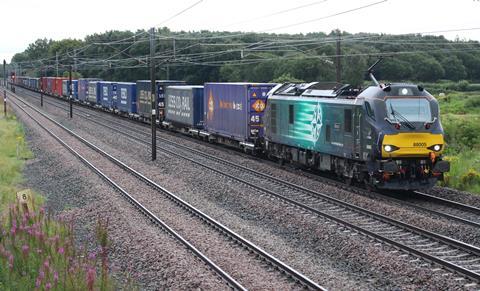
According to Connelly, DRS is “seeing more and more supermarkets enquiring about rail” with a multitude of immediate and long-term factors drawing them in. Top of the list in the past year has been the HGV driver crisis and its upward pressure on wages, though recent fuel price hikes are quickly rising up the agenda.
“If you put a penny on diesel, it affects the road fleet more than it does the rail – because it’s one locomotive versus 40 trucks,” says Connelly. “And driver wages have a multiplier effect.”
There is an acceptance that supermarkets will never be able completely replace road transport with rail. HGVs will still be needed to take products from inland terminals to DCs and stores. But, Connelly adds, “this whole thing works best when rail does the long trunk flows which it’s really good at, and road hauliers do the hub and spoke deliveries – which is what they can make money out of and are good at”.
This is already being put into practice, says Tim Hartley, business development director at GB Railfreight. “What the more intelligent customers are doing is focusing their drivers on the last mile,” he says. “It’s making the supply chain function much more effectively.”
Efficiency and costs are clearly among the draws of rail. But the chief advantage is the environmental benefits. Rail freight in the UK currently saves seven million lorry journeys per year, according to recent research by the Rail Delivery Group and Deloitte – and each tonne of freight transported by rail produces 76% less carbon emissions compared with road.

On a supermarket level, every one of Tesco’s refrigerated trains removes around 40 lorries from Britain’s roads and saves 9,000 tonnes of CO2. Given the service’s frequency, that quickly adds up.
Furthermore, rail is only getting greener. The industry aims to run trains entirely on electricity from renewable sources by the mid-2030s, using the industry’s considerable purchasing power to bring additional renewable generation to the UK. Locomotives themselves are also improving their environmental credentials. The Class 88 locomotive on Tesco’s service is ‘Dual Mode’, meaning it runs off electricity where overhead power is available, and diesel only where it isn’t. The technology to take this further – the engine using battery and hydrogen-power instead – is already “proven” says the Rail Delivery Group.
In the past, these benefits were outweighed by concerns over the suitability of rail for just-in-time supply chains. That Tesco is now using rail for chilled, time-sensitive deliveries marks a turning point. “In old British Railway days there was a level of punctuality and reliability that maybe was OK at the time when supermarkets didn’t do just-in-time delivery,” Connelly says. “The road industry was agile and delivered what the market needed to offer.”
Perceptions are now changing, thanks to a 15-year journey to build confidence. DRS trains are able to access alternative routes to avoid delays and a more flexible workforce so there’s no need for “stopping and resetting for 24 hours” he says.
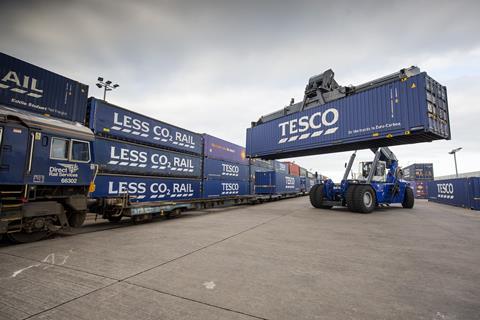
“The reliability and punctuality of rail freight services is very high,” adds Liam Bogues, policy manager at rail industry body Rail Delivery Group. “The predictability of when goods are going to arrive is very high. It wasn’t always the case but it certainly is now.”
Rail has also made efforts to be more customer-friendly. Where it was once “quite a complicated affair”, Connelly says providers have since sought to “simplify the language and simplify the business model”.
At the same time, new international rail routes are coming on track. In September 2020, Tesco secured a partnership with Madrid-based Transfesa Logistics to bring fresh produce from Valencia to Barking via a new express refrigerated service. A year on and the service now encompasses five weekly trains from Spain via the Channel Tunnel, with a further service taking the cargo onward to Scotland.
“Rail freight has a vital role to play in the sustainable transportation of international goods and it’s more important than ever that we ensure these supplies reach the UK,” says Hans-Georg Werner, CEO of Transfesa sister company DB Cargo UK.
Rail ambition
In light of all these tailwinds, the rail freight sector has set ambitious targets. It aims to triple overall freight volumes by 2050. With coal volumes dropping drastically in recent years, and metals and petroleum also falling to a lesser degree, “we see grocery as a huge part of that growth” says Bogues.
Still, it will need to overcome significant hurdles to attract major grocery clients and meet this aim. Given that nearly all grocery goods are transported in intermodal containers, there are capacity constraints coming down the track.
These issues have been masked in part by the huge fall-off of passenger numbers and services due to increased working from home during the pandemic. Operators are now trying to convince government to reduce passenger services for good, and make way for more freight trains, ahead of the formation of state-owned body Great British Railways.
“We’re arguing the passenger numbers are never really going to come back to where they were,” says Hartley. “You can probably take one in four out of the timetable without affecting passenger numbers and allow one of our freight trains to go there. They’re starting to come round to that point of view.”
If these freight services do increase, that will create a need for huge sites where goods can be transferred from rail to road. Some have been greatly extended in recent months – such as DIRFT III, which has grown its handling capacity to 32 trains per day. Last summer, Oxford Properties Group and Logistics Capital Partners formed a joint venture to invest £1bn in a 734-acre site near Birmingham and develop it into a major rail served logistics hub known as West Midlands Interchange.
But “there needs to be more,” says Hartley. “If we don’t have inland terminals to offload products the whole thing falls to bits.” The issue is they can take years to build, leading to a “chicken and egg game” as developers wait for surety of demand that can’t increase until sites are built.
“They need a degree of certainty to get commitments for shareholders to spend millions of pounds,” says John Thomas, Rail Delivery Group’s director of policy.
If a few more grocery players follow Tesco’s lead, that could well happen. The rising cost of transport and ever more pressing environmental targets are making that ever more likely.
“Supermarkets need to realise there’s a variety of ways they can engage with rail, but not engaging with rail is just not good enough,” says Hartley.
As Connelly puts it: “As an industry I see a real renaissance coming our way. And for the grocery sector, it’s the fresh thinkers that are winning the day.”








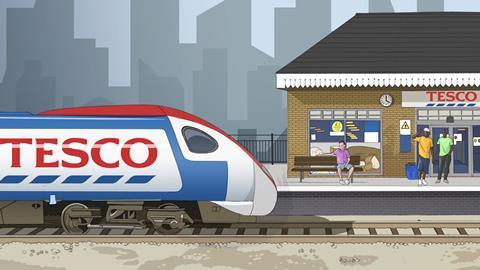
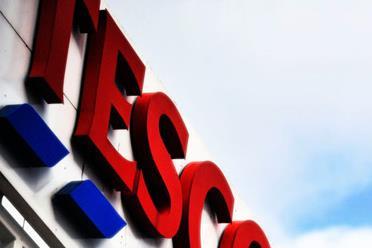


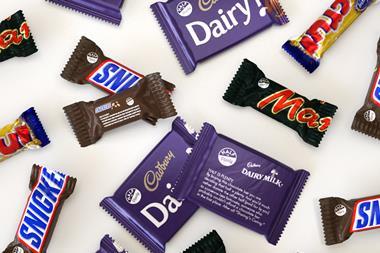








No comments yet